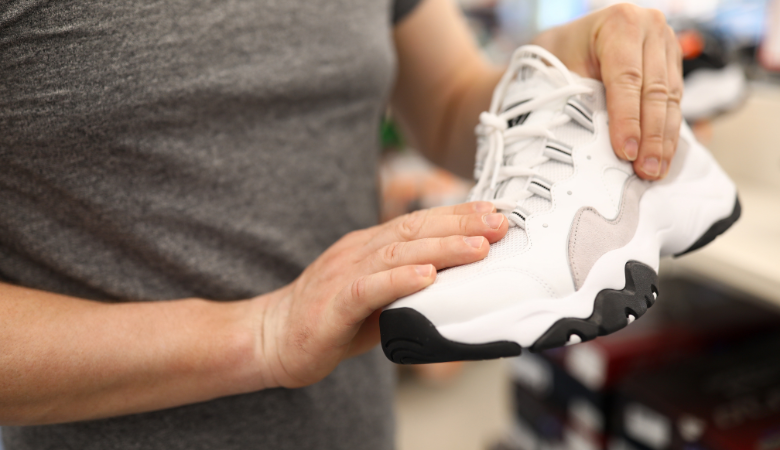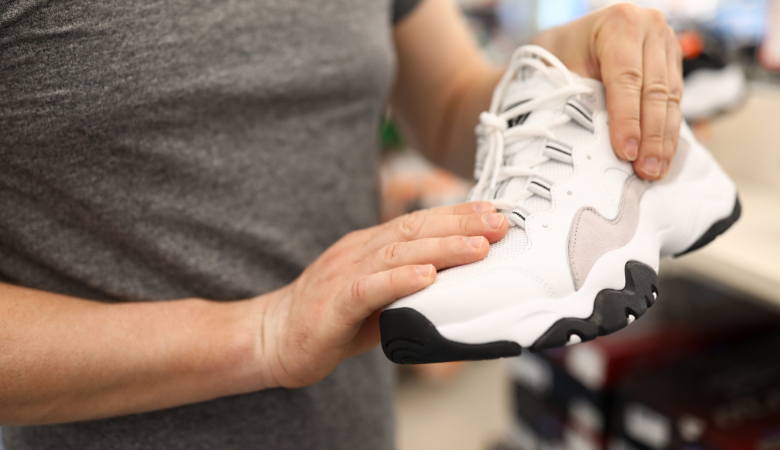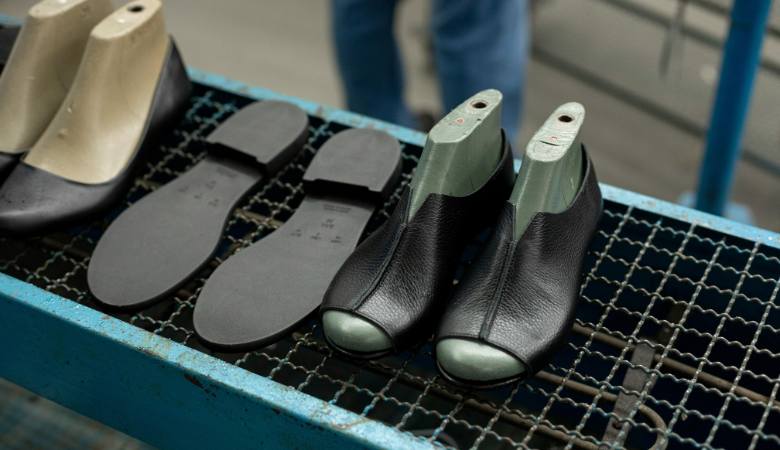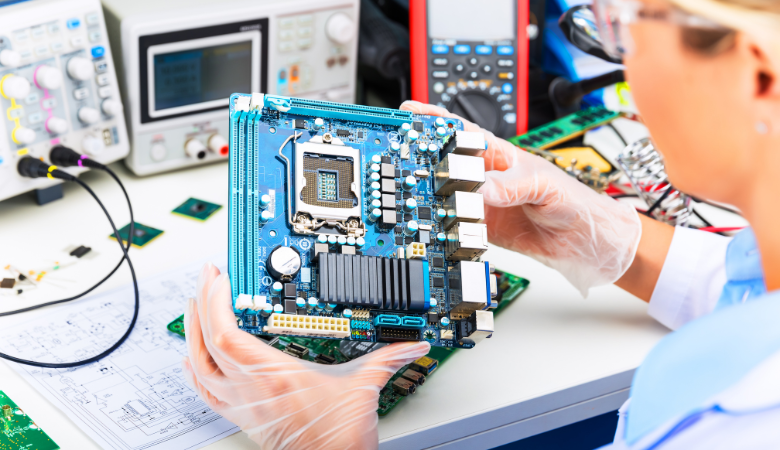
Producing good shoes in China requires close attention to details, especially when it comes to china shoes quality control. Checking quality is key to ensuring that products satisfy customers. Without regular checks, mistakes can tarnish your reputation and erode trust. Quality checks help address challenges like tricky supply chains and stricter regulations. They also enable you to seize opportunities in the competitive shoe market. To succeed, implement smart strategies to maintain high shoe quality while ensuring production remains smooth and steady.

Why Quality Assurance Matters in 2025
Impact on brand reputation and customer loyalty
Checking quality is crucial to keeping your brand's good name. When your shoes are always well-made, customers trust and stick with you. Bad shoes can cause complaints, returns, and fewer sales. Every pair should show your promise to make great products.
Tip: Inspect shoes often during production to catch problems early. This avoids big, costly errors.
Happy customers tell others about your brand, helping it grow. In 2025, the shoe market will be very competitive. Keeping quality high helps you stand out and keeps buyers coming back.
Importance of meeting global compliance standards
Rules for making shoes are getting stricter everywhere. Your shoes must follow these rules to avoid fines and protect your business. Quality checks make sure your shoes meet safety and ethical standards.
For instance, many countries require shoes to pass tests for strength and safe materials. Focusing on quality helps you avoid delays from failed tests. Following rules also lets you sell in more countries, growing your business.
Competitive advantage in the footwear manufacturing process
Good quality gives you an edge in making shoes. Focusing on quality reduces waste and speeds up production, saving time and money. For example, TradeAider's inspection services help sellers ensure their products meet high standards, thereby enhancing their market competitiveness and ensuring quicker delivery.
Well-made shoes grab attention in stores. Customers notice and pick your brand over others. In 2025, using quality checks will help you stay ahead in a crowded market.
Note: Using smart tools like AI and IoT can improve how you check quality and make shoes better.
Key Challenges in Ensuring Quality
Common quality control issues in China’s shoe industry
Making shoes in China can face many quality problems. These include bad materials, poor stitching, or uneven finishes. Issues like glue stains, wrong colors, or weak soles can hurt your brand. Factories may rush to meet deadlines, causing more mistakes.
To fix these problems, set up strong quality checks. Inspect shoes often during production to catch mistakes early. Work with skilled quality teams to ensure your shoes meet your standards.
Tip: Use a checklist of common defects to guide inspections and avoid errors.
Communication barriers and cultural differences
Language and culture can make working with factories harder. Misunderstandings about quality or timelines may cause delays or errors. For example, factories might not follow your instructions correctly, leading to bad products.
To solve this, set up clear ways to communicate. Use pictures or samples to explain what you want. Hiring bilingual staff or local agents can help factories understand your needs.
Supply chain complexities and subcontracting risks
China's shoe factories often use many suppliers and subcontractors. This makes it hard to check every step of production. Subcontracting can lead to uneven quality or wrong materials being used.
You can lower these risks by checking your supply chain often. Pick suppliers with a good history of reliability. Tools like blockchain can help track each production step for better transparency.
Note: Managing your supply chain well ensures steady quality and fewer surprises.
Balancing quality with affordability in a competitive market
Finding the right mix of quality and price is tough. People want good shoes that don’t cost too much. To do this, you need smart planning and careful work. Keep your production smooth while making sure standards stay high.
Here are some ways to manage this balance:
• Simplify production steps: Make fewer steps to save time and money. For example, machines can speed up work without lowering quality.
• Choose affordable materials: Find suppliers with strong but low-cost materials. Check these materials often to ensure they meet your needs.
• Work with factories: Build good relationships with manufacturers. Talk about prices, but don't push them to lower quality.
Tip: Stick with trusted suppliers for better deals and steady quality.
Technology can also help you save money. Tools like data prediction can show how much to make. This stops waste and keeps costs low by avoiding extra stock.
Always be clear about your quality rules. Tell factories exactly what you expect. Check shoes during production to catch problems early and avoid big mistakes.
By using these ideas, you can make affordable shoes that are still high quality. This keeps customers happy and helps you stay strong in the market.
Step-by-Step Quality Assurance Process
Defining quality standards and specifications
Setting clear rules for quality is the first step. Decide what makes your shoes good for customers. This includes strong materials, neat stitching, and accurate designs. A detailed list helps factories understand what you want.
Make a document with these rules. Add pictures or diagrams to show your ideas. For example, include images of proper stitching or acceptable material textures. This reduces confusion and ensures everyone works toward the same goal.
Tip: Share this document with suppliers and factories to keep everyone on the same page.
Selecting reliable suppliers and conducting audits
Choosing reliable suppliers is crucial for maintaining high quality. TradeAider can assist in verifying suppliers' compliance with quality standards, ensuring they provide consistent materials and follow established rules. Their team of professional inspectors can conduct thorough audits to confirm suppliers' reliability.
After choosing a supplier, visit their facilities often. Look at how they get materials and make products. Make sure they follow your quality rules.
Use a checklist during visits to stay organized. Include tests for materials, production timelines, and ethical practices. Regular visits build trust and lower the chance of mistakes.
Note: Strong supplier relationships improve communication and reduce surprises during production.
Pre-production footwear inspection procedures
Before making shoes, check samples to ensure they meet your rules. Look at the materials, design, and construction to confirm they are correct.
Find problems early to save time and money. For example, check if the materials are strong enough or if the stitching matches your design. Fix issues before starting mass production.
Follow these steps for inspections:
1. Match the sample to your rules document.
2. Test materials for strength and flexibility.
3. Check the design for accuracy and consistency.
4. Write down problems and tell the factory.
Tip: Use a skilled inspection team for better checks and fair results.
Pre-production checks help catch problems early. They ensure smooth production and keep quality high.
In-line production monitoring techniques
Watching production while it happens helps catch problems early. This means checking different steps to keep quality steady. By doing this, you stop mistakes from adding up and avoid costly fixes later.
Here's how to monitor production effectively:
1. Assign trained inspectors: Place skilled workers on the line to check each step. They should look for problems like bad stitching, wrong assembly, or damaged materials.
2. Use random checks: Instead of checking everything, pick random items to inspect. This saves time but still finds issues.
3. Create checkpoints: Break the process into key parts like cutting, sewing, and putting pieces together. Check items at these points to ensure they meet your rules.
4. Write down problems: Keep notes on any mistakes or issues. Share these notes with the factory team to fix repeated problems.
Tip: Give inspectors tools like scanners or tablets to quickly record and share findings.
In-line checks improve quality and make production smoother by solving problems early.
Final product inspections and pre-shipment checks
Before sending shoes to customers, make sure they meet your quality rules. Final checks are the last chance to catch mistakes.
Follow these steps for good inspections:
• Look for flaws: Check for scratches, stains, or uneven finishes. Make sure the shoes match the approved design and color.
• Test strength: Check if soles are strong, materials bend well, and stitching holds up. These tests show if the shoes can handle daily use.
• Check packaging: Make sure boxes are secure and have the right labels or tags. Good packaging keeps shoes safe during shipping.
Pre-shipment checks review the whole batch before it leaves the factory. Inspectors compare the shipment to the order to confirm amounts and details.
Note: Hire outside agencies for fair reviews of your final products.
These checks lower the chance of returns and keep customers happy.
Setting up feedback loops for better improvement
Quality control doesn't stop after production. Feedback loops help you learn from mistakes and get better over time.
Here’s how to set up feedback loops:
• Gather information: Collect data from checks, customer complaints, and factory reports. Look for patterns in mistakes or delays.
• Find the cause: Figure out why problems keep happening. For example, bad stitching might come from untrained workers or broken machines.
• Fix the problem: Work with the factory to solve these issues. This could mean training workers, fixing machines, or changing how things are made.
• Review often: Check regularly to see if your fixes are working. Change your plans if needed to keep improving.
Callout: Feedback loops help you improve and keep quality high.
By focusing on feedback, you can work better with factories and make shoes your customers love.
Technological Innovations in Quality Control
AI applications for defect detection and predictive analytics
Artificial intelligence (AI) is changing how shoes are made. AI can spot problems in shoes quickly and accurately. It looks at shoe pictures during production to find issues like bad stitching, damaged materials, or wrong assembly. These systems work faster than people and miss fewer mistakes.
Predictive tools are also very helpful. By studying old production data, AI can guess future problems. For example, it might notice patterns that cause weak soles or broken materials. Fixing these early saves both time and money.
Tip: Choose AI tools that fit well with your factory setup. This makes production smoother and keeps shoe quality high.
Blockchain for supply chain transparency
Blockchain helps track every step of making shoes. It creates a digital record of all material movements and transactions. This makes it easy to check where materials come from and if they meet your standards.
For example, you can confirm if the leather in your shoes is ethically sourced. Blockchain also stops fake materials from entering your supply chain. Clear records help you trust suppliers and keep shoe quality steady.
Callout: Blockchain builds trust by proving your products are real and reliable.
IoT devices for real-time monitoring in the footwear manufacturing process
The Internet of Things (IoT) changes how factories check production. IoT devices, like sensors and smart machines, give live updates on production conditions. They track things like temperature, humidity, and machine health, which affect shoe quality.
For example, sensors can warn you if a machine breaks or materials are used wrong. Fixing these problems right away stops bigger mistakes later. IoT also helps find slowdowns in production, making work faster and smoother.
Note: Use IoT to connect your factory systems. This keeps shoe quality steady and reduces waste.
Automation in Testing and Inspection Processes
Automation has changed how shoe factories check quality. Using machines for testing and inspection makes work faster and more accurate. It also reduces mistakes that people might make. These tools save time and keep quality steady during production.
Benefits of Automation in Testing and Inspection
1. Faster Checks: Machines can inspect many shoes quickly. This helps meet deadlines without lowering quality.
2. Better Accuracy: Advanced tools find tiny problems like bad stitching or weak materials. These are things people might miss.
3. Lower Costs: Automation costs a lot at first but saves money later. It reduces waste and fixes fewer mistakes.
4. Steady Results: Machines give the same results every time. This ensures all shoes meet your quality rules.
Tip: Start small by automating one task, like testing materials. Add more tools as you see success.
How to Use Automation in Your Factory
1. Find Problem Areas: Look for parts of production where mistakes happen often.
2. Pick the Right Tools: Choose machines that fix these problems. For example, use vision systems for stitching errors.
3. Train Workers: Teach your team how to use and care for the machines. This helps them fit into your process easily.
4. Check Progress: Watch how well the machines work. Use their data to improve over time.
Note: Machines don't replace people. They help by doing simple tasks so workers can focus on harder jobs.
By using automation, you can make inspections easier, avoid mistakes, and create high-quality shoes that customers love.
Collaborative Approaches for Better Quality
Building strong relationships with manufacturers
Good partnerships with factories help keep quality steady. Trust makes factories care more about meeting your needs. Visit their workplaces often to see how they work. These visits show where improvements are needed.
Talk clearly about what you expect. Share your quality rules using pictures or samples. This makes your needs easier to understand. Working together helps both sides aim for the same goals.
Tip: Praise factories that meet your quality rules. This encourages them to keep doing good work.
Training factory workers on quality standards
Factory workers are key to making good shoes. Without training, even great tools and materials can lead to mistakes. Teach workers how to follow your quality checks. Show them how to spot problems and use inspection tools.
Hands-on lessons are helpful for tricky tasks. For example, show how to check stitching or test soles for strength. Training improves their skills and builds their confidence in making good products.
Callout: Skilled workers stop mistakes early. Train them well to keep quality high.
Encouraging open communication and feedback
Talking openly helps everyone improve. Ask factory teams to share their ideas and problems. Their feedback can stop issues before they grow bigger.
Hold regular meetings to talk about production progress. Use these talks to fix problems and find solutions together. When workers feel listened to, they work harder to do better.
Note: Open communication builds trust and makes production smoother.
Partnering with third-party quality control agencies
Teaming up with third-party quality control agencies can significantly enhance your product quality. For instance, TradeAider offers comprehensive third-party inspection services that assist sellers in ensuring product quality and compliance before listing on e-commerce platforms. Their services cover a wide range of product categories and include detailed inspections of over 30 core indicators, ensuring that each product meets the required standards.
A big advantage of using third-party inspectors is their fairness. They work independently and give honest feedback about your production. This makes pre-shipment checks more accurate and trustworthy. You can rely on their reports to make better decisions about your products.
Here's how these agencies can support you:
1. Pre-shipment inspection services: They carefully check shoes before they leave the factory. They look for problems like bad stitching, weak soles, or wrong packaging. This step helps avoid customer complaints and returns.
2. Expertise in quality control: These inspectors are trained to spot issues others might miss. Their knowledge ensures every shoe meets your quality rules.
3. Time and cost savings: Outsourcing inspections saves you time and money. You don't need to train staff or buy costly tools. The agency takes care of it all.
To pick the right agency, check their reputation and past work. Look for certifications and read client reviews. A good agency will give detailed reports and work with you to fix problems.
Tip: Check how well your third-party inspection agency is doing regularly. This ensures they keep meeting your needs.
By working with these agencies, you can keep high-quality standards, lower risks, and deliver shoes that make your customers happy.
Case Studies and Best Practices
Successful implementation of china shoes quality control
Learning from others can help improve quality control. For example, TradeAider's E-Commerce Quality Solutions provide a tailored approach for e-commerce sellers, ensuring end-to-end quality control. Their services cover a wide range of product categories and include detailed inspections of over 30 core indicators. This comprehensive approach has helped sellers enhance product competitiveness and meet platform requirements effectively.
The company set up a strong inspection system. Inspectors checked production lines and randomly tested shoes for defects. They used advanced tools like cameras to find stitching mistakes or weak materials. By doing this, they reduced returns and earned customer trust.
Tip: Use technology and regular checks to keep high quality standards.
Lessons learned from addressing quality control issues
Many companies face problems with quality control in China. One issue is uneven quality due to subcontracting. A company fixed this by checking all suppliers and making sure they followed strict rules. They also tested durability at different stages to catch issues early.
Another company had trouble with communication. They hired bilingual staff to help factories understand their needs. This reduced mistakes and improved the shoe-making process.
Callout: Solve these problems with audits, clear communication, and regular tests.
Best practices for maintaining long-term quality consistency
Keeping quality steady needs a clear plan. Start by setting rules and tests for every product. Check durability to make sure shoes last long. Test comfort and performance to ensure usability.
Inspect shoes during and after production to find defects early. Train factory workers to understand your quality goals. This helps everyone work together.
Good supplier relationships also matter. Reliable suppliers are more likely to meet your standards. Finally, use feedback to learn from mistakes and improve over time.
Note: Consistent quality keeps customers happy and builds a strong brand.
Making sure shoes are made well in China is very important in 2025. Clear steps help keep things consistent and prevent big errors. Using tools like AI and IoT makes work faster and helps create better shoes. Working closely with factories and outside experts ensures everyone aims for the same goals.
Facing challenges and focusing on quality makes your brand stronger and earns customer trust. These actions not only make your shoes better but also help your business grow in a tough market.
FAQ
What should you check for shoe quality control?
Check materials, stitching, soles, and packaging carefully. Make sure shoes match your design plans. Test if they are strong and comfortable to use. Use a checklist to avoid missing important details during inspections.
How do on-site checklists help improve production?
On-site checklists find problems early in production. Inspectors use them to check stitching, assembly, and material strength. These lists keep work consistent and lower mistakes, saving time and money.
Why are inspection reports useful?
Inspection reports keep records of product quality. They help find repeated problems and track fixes. These reports also show suppliers and customers that you care about high standards.
How can you make sure suppliers follow your rules?
Visit suppliers often to check their work and materials. Do audits to see if they meet your standards. Share your rules clearly. Use tools like blockchain to track materials and ensure they follow your rules.
How does technology help with quality control?
Technology makes inspections faster and more accurate. AI finds defects, IoT tracks production, and automation handles simple tasks. These tools reduce mistakes and keep shoe quality steady.

Smart Sourcing & Quality Assurance Content Team
Article by Smart Sourcing & Quality Assurance Content Team
The Smart Sourcing & Quality Assurance Content Team is dedicated to delivering high-quality, easy-to-understand information that empowers our audience to navigate the complexities of global sourcing and quality assurance. Our team of writers has extensive experience in creating content across various fields, including procurement, supply chain management, quality assurance, market trends, and industry best practices. We specialize in sectors such as apparel, textiles, and consumer goods, providing targeted insights to help businesses in these industries optimize their sourcing strategies, ensure product quality, and maintain a competitive edge in the market.


